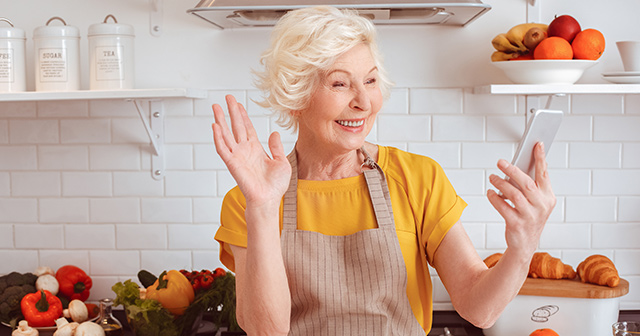Long before news of the coronavirus emerged in late 2019, researchers have been studying the effects of isolation on older people.
Now, as the world responds with unprecedented speed to the threat of COVID-19, the urgency of helping everybody stay in touch is an urgent priority – especially for vulnerable seniors and the newly telecommuting, homeschooling, stressed sandwich generation, who coordinates their care (now from a distance).
Physical social distancing is a critical precaution to “flatten the curve.” And yet, we must also be aware of the potential for serious psychological and emotional consequences of physical isolation and take proactive steps to prevent and mitigate that toll.
Everyone needs different amounts of social connection to avoid loneliness
We know social isolation and loneliness are two different things. Loneliness is a feeling of deprivation; we are social animals, and we need each other. At the same time, individual needs for social connection vary, just as our needs for sleep.
Had we all been asked to retreat to our homes for the safety of others in the 1990s or even in 2006, we would have been able to rise to the challenge, but with much greater consequences to our mental and emotional health. Even as The New York Times profiled the difficulties older people are facing in ‘I’m Really Isolated Now’: When Elders Have to Fight Coronavirus Alone, there are blessings to count: COVID-19 emerged at a time in human history when we have never been better equipped to handle the challenge of isolation through technology.
With cellphones, tablets, smart televisions, broadband internet and free or affordable communication platforms, people have more ways to remain in touch today than at any point in our past.
Make a plan to prevent loneliness during social distancing and preventive isolation
The United States is still making its earliest efforts to establish policies, practices, and protocols to keep everyone as safe as possible during this period. As we continue to learn more about the best medical and scientific evidence, recommendations and situations may continue to change. Still, families and individuals can help proactively stave off emotional and psychological pressures that can result from too much alone time.
1. Make a plan for the new normal.
Who are the friends, neighbors and relatives you would go out with or have over under normal circumstances?
Reach out to them via text, email or phone calls at regular intervals. See how they’re doing. Find out if they have a plan to stay in touch with people. Find out what technology everyone has in common, then organize virtual get-togethers.
Identify regular times and days to check in with each other and stick to them – either with a quick text, call or video chat. Most importantly: Don’t fret if you haven’t showered, done your makeup or combed your hair when a video call arrives. Your loved ones want to see your face and hear your voice, and connection is the best medicine.
Get creative. What normal social activities can you do online? Pictionary? Charades?
Make planning the next call the fun part of each get-together. Having something to look forward to is important in uncertain, stressful times, and the promise of a nightly or weekly face-to-face, long-distance game of chess or checkers can become a lifeline for someone who’s been unable to see people in the real world.
2. Explore video chat options.
If you haven’t yet dipped your toe into video chat technology, now is the time to take a few deep breaths, set aside trepidation and get started. What’s the worst thing that could happen?
Video chat platforms like Zoom and Google Hangouts each require a slightly different setup. But they should all be compatible with most smartphones, laptops and tablets (with the exception of Apple’s FaceTime).
The most popular platforms have pages of help and troubleshooting. And there’s always technical support to assist Mom with setting it up if she’s having a bit of trouble at the beginning.
The author is a writer for GreatCall, a company owned by Best Buy that uses technology to help older adults live safer, more independent lives. Find more stories and resources on their Currents blog.


